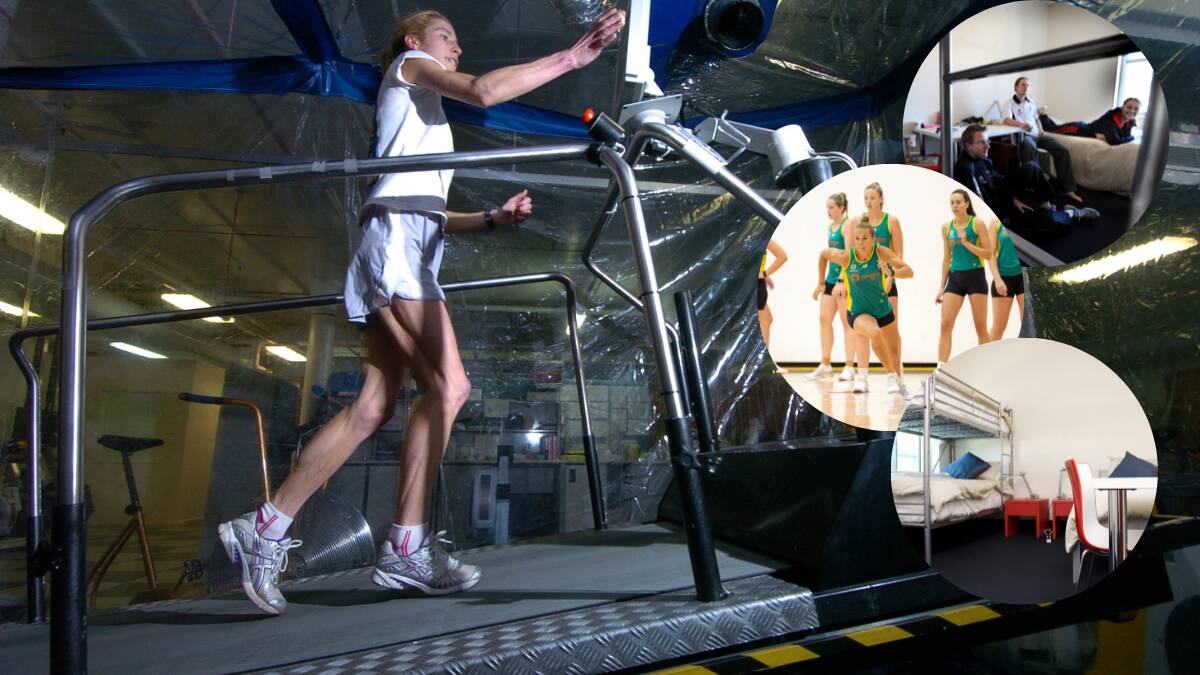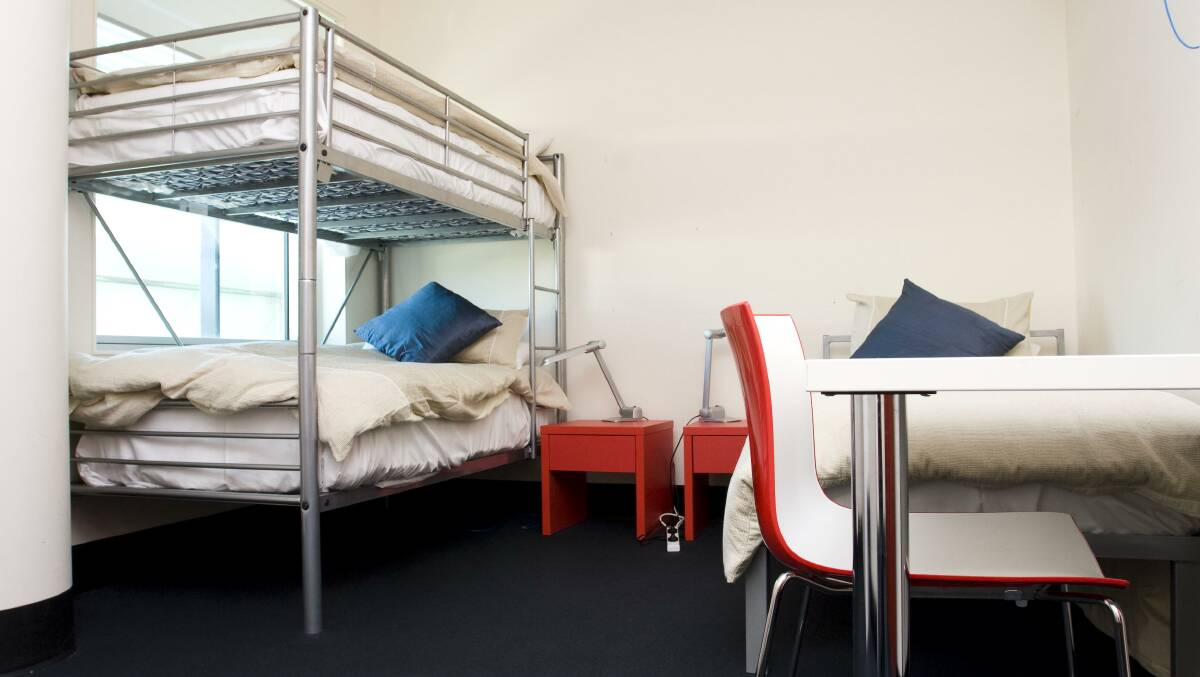The AIS will build a new altitude residence big enough for an entire basketball or soccer team to give athletes "the extra edge" in the race for Olympic and Paralympic medals and world title dreams.
Subscribe now for unlimited access.
$0/
(min cost $0)
or signup to continue reading
The Canberra Times can reveal the institute is searching for a partner to design and build a $4 million altitude house at the Bruce campus in one of the sports science investments in recent years.
When it is finished next year, it will be the only one of its kind in the southern hemisphere and be capable of hosting up to 22 athletes at a time for "live high, train low" camps.
It will also replace the old altitude house at the AIS, which was built in the late 1990s in the sports science building and could host a maximum of 10 people at a time.
Olympic champions Alicia Coutts, Jared Tallent, Chloe Esposito all used the altitude house in the lead up to their gold-medal moments and senior physiologist Philo Saunders says a new generation can get the same benefits.
The new facility will be retrofitted into the existing residence at Bruce, with a series of ducts and seals need to ensure it can be programmed to simulate up to 3000 metres above sea level.
"There's no real secret about altitude training. People know about it and people are using it [around the world. So if we don't have access to it, we'd be falling behind," Saunders said.
"And the beauty of having it at the AIS rather than going to Flagstaff [in the United States] or St Mortiz [in Switzerland] is that you've got all the other services at the AIS.
"The model now should incentivise people to do their training here in conjunction with the altitude camp.
MORE CANBERRA SPORT
"That's why this place was set up. To make a difference and give the extra edge for the Olympic, Paralympic and Commonwealth Games sports. We don't want to drift too far away from that, and we want to provide state of the art, cutting edge methods of improving performance.
"The altitude house is tried and tested. We've used it in successful campaigns and it wasn't the only reason for success, but it was an element."
Australian Sports Commission boss Kieren Perkins is keen to invest in AIS upgrades to ensure the facilities are attractive and useful for athletes through a golden decade of sport.
The altitude house won't be online in time to be used for as a preparation tool for the Paris Olympics next year, but it will feature as a key part of the build up to 2028 in Los Angeles and 2032 in Brisbane.
There will be 22 individual bedrooms in the "Residence of Champions" with the clusters to stretch across three floors and also include separate lounge rooms. The rooms can be used as normal AIS accommodation when not required for altitude training.

Studies have showed exposure to high altitude can increase the red blood cell count and aerobic capacity. The idea is to increase the oxygen carrying capacity to exercise at a higher level for longer.
Saunders said the ideal camp will last three weeks, with that timeframe able to be reduced with regular altitude training.
Athletes will spend up to 14 hours per day in the altitude settings but will be able to train indoors or outdoors in Canberra and eat in the AIS dining hall.
"With the previous altitude chamber you had to go into the physiology lab and it was a bit stand alone. This one will have the whole pod at altitude. A lot of our research has shown live high, train low will maximise the response," Saunders said.
"Our old one was just an enclosed space at the lab with beds shoved in and it was almost impossible to spend 12-14 hours per day in there.
"Before Rio, London and Beijing Olympic and Paralympic Games, we were beyond capacity. We had to turn people away, this time we can have multiple sports using it at the same time or a whole football team.
"We haven't been able to do that because of the limited size, so that's exciting. Now you can come to Canberra and get the benefit of being at altitude - I think it will be a big drawcard."

Saunders said athletes would notice the difference in altitude within hours of being in the room. Their breathing rhythm changes and sleep patterns will be interrupted as they adjust to the environment.
Phase two of the plan will likely include training facilities with treadmills and gym equipment to allow athletes to live and train at high altitudes. It will eliminate the need for athletes to base themselves overseas.
"Ideally we can get an environmental training chamber as well. The University of Canberra has one as well with one treadmill, but if we could do one bigger in size you could get teams in," Saunders said.
"If we had a residence that could house 22 people and everyone could train at altitude ... you can maximise your response. Not many places do both.
"The research shows that there will be about a 4 per cent increase in red blood cells at a three-week camp. You can't just go there and cook yourself or over train. With everything else being even, that should lead to a better performance.
"You can get sports on campus who haven't used [the AIS] for the last few years. The endurance sports will come, which is why it was initially set up in the late 1990s. Our altitude house is past its use-by date ... there's a need for [a new one] in the sporting landscape."
We've made it a whole lot easier for you to have your say. Our new comment platform requires only one log-in to access articles and to join the discussion on The Canberra Times website. Find out how to register so you can enjoy civil, friendly and engaging discussions. See our moderation policy here.
Our journalists work hard to provide local, up-to-date news to the community. This is how you can continue to access our trusted content:
- Bookmark canberratimes.com.au
- Download our app
- Make sure you are signed up for our breaking and regular headlines newsletters
- Follow us on Twitter
- Follow us on Instagram


